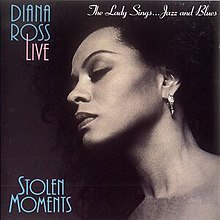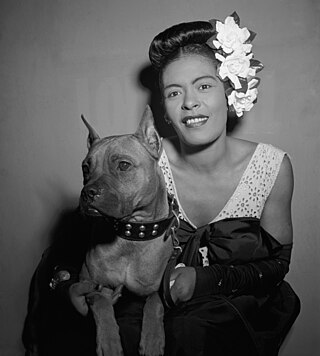
Billie Holiday was an American jazz and swing music singer. Nicknamed "Lady Day" by her friend and music partner, Lester Young, Holiday made a significant contribution to jazz music and pop singing. Her vocal style, strongly influenced by jazz instrumentalists, inspired a new way of manipulating phrasing and tempo. She was known for her vocal delivery and improvisational skills.

Diana Ross is an American singer and actress. She was the lead singer of the vocal group the Supremes, who became Motown's most successful act during the 1960s and one of the world's best-selling girl groups of all time. They remain the best-charting female group in history, with a total of 12 number-one pop singles on the U.S. Billboard Hot 100, including "Where Did Our Love Go", "Baby Love", "Come See About Me", "Stop! In the Name of Love", "You Keep Me Hangin' On", and "Love Child".

Lady Sings the Blues is a 1972 American biographical musical drama film directed by Sidney J. Furie about jazz singer Billie Holiday, loosely based on her 1956 autobiography which, in turn, took its title from Holiday's song. It was produced by Motown Productions for Paramount Pictures. Diana Ross, in her feature film debut, portrayed Holiday, alongside a cast including Billy Dee Williams, Richard Pryor, James T. Callahan, and Scatman Crothers. The film was nominated for five Academy Awards in 1973, including Best Actress for Diana Ross.

"I'm Coming Out" is a song recorded by American singer Diana Ross. It was written and produced by Chic members Bernard Edwards and Nile Rodgers, and released on August 22, 1980, as the second single from Diana’s self-titled eleventh album, Diana (1980).

Lady Sings the Blues is the soundtrack to the Billie Holiday biopic of the same name, which starred Diana Ross in her 1972 screen debut. It became Ross' first #1 album, though the only one as a solo artist. It was certified gold in the UK for sales of over 100,000 copies. It was the fourth best-selling R&B album and fifth best-selling Pop album of 1973 in the US.
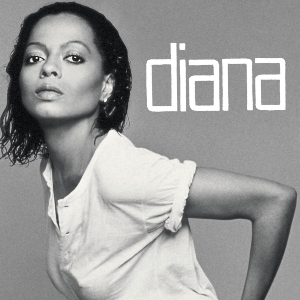
Diana is the eleventh studio album by American R&B singer Diana Ross, released on May 22, 1980, by Motown Records. The album is the best-selling studio album of Ross's career, spawning three international hit singles, including the number-one hit "Upside Down".
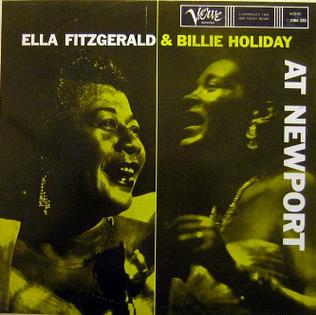
Ella Fitzgerald and Billie Holiday at Newport is a 1958 live album by Ella Fitzgerald and Billie Holiday, recorded at the 1957 Newport Jazz Festival.

The Supremes Sing Rodgers & Hart is the eleventh studio album released by The Supremes for Motown in 1967. The album is wholly composed of covers of show tunes written by the songwriting duo of Richard Rodgers and Lorenz Hart. The album was the final album released before The Supremes' name was changed to "Diana Ross & the Supremes," and member Florence Ballard was replaced by Cindy Birdsong.

An Evening with Diana Ross is a 1977 live double album released by American singer Diana Ross on the Motown label. It was recorded live at the Ahmanson Theatre in Los Angeles in December 1976 during the international tour of Ross' one-woman show, for which she was awarded a special Tony Award after the show's run at Broadway's Palace Theater, followed by an Emmy-nominated TV special of the same name. It marked the first time in history a solo female headlined a 90-minute TV special. The album reached #29 in the USA . The album showcased her live performances for the second time as a solo performer, following 1974's Live At Caesars Palace. It was the last live album Ross released until 1989's Greatest Hits Live.
"God Bless the Child" is a song written by Billie Holiday and Arthur Herzog Jr. in 1939. It was first recorded on May 9, 1941, by Billie Holiday and released by the Okeh Records in 1942.
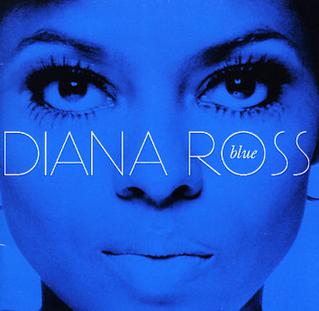
Blue, originally titled The Blue Album, is a studio album by American singer Diana Ross. Initially recorded between late 1971 and early 1972, it was released as Ross' twenty-third studio album by Motown Records on June 20, 2006. Overseen by Ross' musical director Gil Askey, the jazz-flavoured album was originally conceived as a follow-up to her soundtrack to the 1972 American biographical drama film Lady Sings the Blues in which Ross starred. Berry Gordy and Motown subsequently decided to shelve the album, and Ross' next release was the more pop-oriented Touch Me in the Morning (1973) album.

Lady Day is a studio album by Amii Stewart released in 2004 arranged by Emanuele Friello with original songs by Emanuele Friello and Stewart. The album is the Italian cast recording of a musical based on the life of American jazz and blues singer Billie Holiday co-written by and starring Stewart.
"What a Little Moonlight Can Do" is a popular song written by Harry M. Woods in 1934. In 1934, Woods moved to London for three years where he worked for the British film studio Gaumont British, contributing material to several films, one of which was Road House (1934). The song was sung in the film by Violet Lorraine and included an introductory verse, not heard in the version later recorded by Billie Holiday in 1935.

Forever Diana: Musical Memoirs is a four-CD box set of recordings by American singer Diana Ross released on October 5, 1993 by Motown Records.

"Mon Homme", also known by its English translation, "My Man", is a popular song first published in 1920. The song was originally composed by Maurice Yvain with French lyrics by Jacques-Charles and Albert Willemetz. The English lyrics were written by Channing Pollock.

Live at Caesars Palace is a live album by the American singer Diana Ross, released in 1974. It was recorded during a 1973 performance at Las Vegas' Caesars Palace. It was the first of two live albums Ross recorded for Motown. It reached No. 64 in the USA.
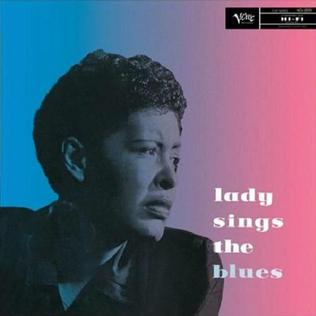
Lady Sings the Blues is an album by American jazz vocalist Billie Holiday released in December 1956. It was Holiday's last album released on Clef Records; the following year, the label would be absorbed by Verve Records. Lady Sings the Blues was taken from sessions taped during 1954 and 1956. It was released simultaneously with her ghostwritten autobiography of the same name.

Eleanora Fagan (1915–1959): To Billie with Love From Dee Dee Bridgewater is a 2009 studio album by Dee Dee Bridgewater, recorded in tribute to Billie Holiday. It won the 2011 Grammy Award for Best Jazz Vocal Album, Bridgewater's third Grammy win in her career. Bridgewater had previously starred in Lady Day in the late 1980s, a biographical play about Holiday.
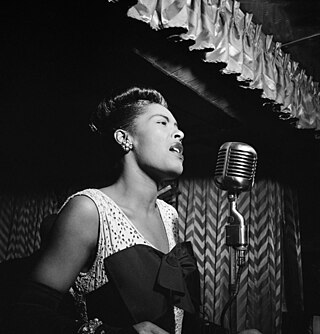
The discography of Billie Holiday, an American jazz singer, consists of 12 studio albums, three live albums, 24 compilations, six box sets, and 38 singles.

The Essential Billie Holiday: Carnegie Hall Concert Recorded Live is a live album by jazz singer Billie Holiday that was recorded on November 10, 1956 at Carnegie Hall in New York City. The two concerts promoted Billie Holiday's autobiography, Lady Sings the Blues.
